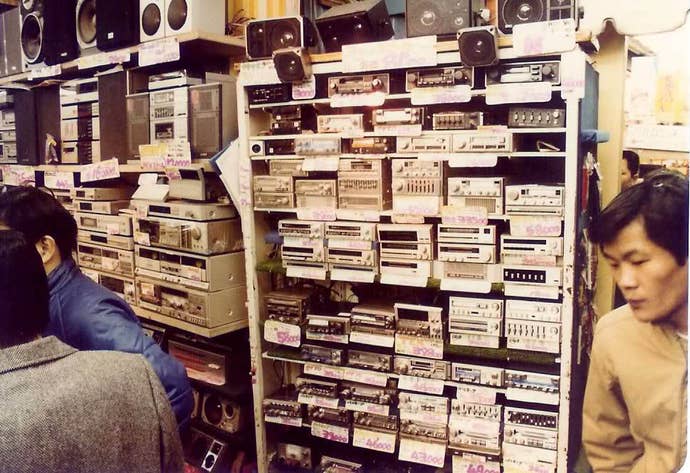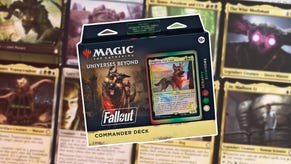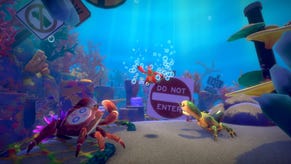Infinity, Beyond: A Small Japanese Studio Braces for the Future
How the developer behind 8-bit cult classic The Battle of Olympus has survived nearly 30 years of industry upheavals, and what's next for the company.
This article first appeared on USgamer, a partner publication of VG247. Some content, such as this article, has been migrated to VG247 for posterity after USgamer's closure - but it has not been edited or further vetted by the VG247 team.
You've probably never heard of Japanese developer Infinity. It's possible you've played some of their games—perhaps NES cult classic The Battle of Olympus?—but even then you most likely haven't touched a new Infinity creation in a couple of decades.
Nevertheless, the Tokyo-based developer is one of the few small studios to have weathered the upheavals the games industry has experienced over the past 30 years. The history of the NES is crammed with long-forgotten developers, studios that appeared in the midst of the '80s Japanese economic boom (and the surge of interest in console development that arrived around the same time) only to disappear as the market changed over the following decade. Creating games grew more expensive as technology advanced, and many small companies couldn't keep up, especially as graphics made the jump to 3D during the PlayStation era.
Infinity may have started out as one of these countless small corporations, but unlike most of its competition, it survived. Currently, Infinity operates out of an office tucked away in a residential section of Tokyo's Ebisu ward, just off the busy Yamanote Line. Despite Infinity's relative anonymity, though, the company employs roughly 70 people, catering entirely to the Japanese market. Infinity has rarely produced a game released in the U.S. since the '90s—2004's oddball frog-themed golf game Ribbit King for GameCube being their most recent—and therein, surprisingly, may lie the secret of the company's survival. Infinity has proven nothing if not adaptable over the years, reinventing itself as needed to remain profitable, eschewing glamorous but risky projects in favor of practical contract work for a variety of publishers on popular, lower-end systems like the 3DS.
The credit for Infinity's durability falls squarely on its founder and president, Yukio Hiromoto. A programmer who took advantage of a modest financial windfall in the '80s to establish his own company, Horimoto doesn't comes across as your typical game executive. He seems intensely mindful of his obligations to his company and its employees, and he insists on being hands-on; even now, despite managing nearly 100 employees and contractors working on multiple projects, he says he steps in to help with programming as often as he can.
"I like programming," he says. "I want to run my company, but that's not my purpose. My purpose is to program games. So, to support programming games, I run my company."
Horimoto strikes me as the rare game studio manager who has never lost sight of his passion for the medium. That same considerate, hands-on approach has helped steer Infinity through the sea changes wrought by multiple console generations. And now, as the Japanese games market undergoes its latest—and, perhaps final—transformation, it falls once again to Horimoto to guide Infinity into the future.

Horimoto and I met on the final day of this year's Tokyo Game Show, an event dominated by mobile and social games. While a few final giants of the old guard operated massive booths at TGS—Sony, Square Enix, Koei Tecmo—most of the floor space was given over to phone and browser games that foreign visitors to the show had never heard of. The main event for these companies wasn't to show off upcoming software to the press, but rather to host special events for fans. If ever there were a question that traditional gaming is heading toward extinction in Japan, TGS 2015 left little doubt—and it absolutely underscored the importance of Horimoto's plans for Infinity.
"Predicting the future is very difficult," he admits. "And nowadays, changes happen quickly, within only four or five years. The first iPhone came the market almost six years ago. And in five or six years, we’ll have different gear for playing games."
One thing Horimoto does predict for the future is the continued contraction of Japan's console and portable markets. Even Nintendo has begun making the shift to phone and social platforms, as last week's Miitomo announcement demonstrated. That project seems practically guaranteed to take the Japanese mobile market by storm, but any success Nintendo experiences with its mobile debut will be an exception rather than a rule. No other game publisher commands Nintendo's mindshare, market share, or pop-culture presence in its home territory. For a small studio like Infinity, which makes its living fulfilling contract assignments for a variety of publishers based on a broad assortment of licensed properties, mostly targeted toward children, the Japanese mobile market is as good as saturated at this point. Horimoto's answer: Look beyond Japan.
"Changing your direction can be very difficult," he muses, "but now I’m almost 60, and I think this is my last chance at a challenge. So I want to do my best. It’s simple. Japan is very different than when I began my business. The market here is very small, and the mobile market is just for services, not for games, so we need to find an alternate way to develop game software."

From the ground up
Infinity's story begins in the ’80s, as Japan's video game industry exploded in popularity. Driven by the country's remarkable economic growth and the success of Nintendo's Famicom, home gaming became a major concern practically overnight. American game magazines such as Nintendo Power and Electronic Gaming Monthly would occasionally offer glimpses into the manic world of Tokyo game fanaticism: The throngs of shoppers in electronics stores, the lines wrapping around the enormous Yodobashi Camera in Akihabara consisting of kids eager to play the latest Dragon Quest .
It was in this environment that Horimoto first conceived of Infinity. "30 years ago in Akihabara, it was chaos," he recalls. "Like a dungeon! I liked that mood, and I'd get together with a friend, talking every day, talking about computers—personal computers.
"I worked for a very small company at the time. I went to Akihabara every day to talk with my friend about computers. Maybe you can imagine, back then: 64 kilobytes of memory, big floppy disks, and hard drives that were very expensive. My first hard drive was 20 megabytes—I spent my own money, which was over ¥200,000 [approx. $2,000/$4,000 adjusted for inflation]. I was really excited, and I programmed some tools for an MS-DOS index-writing system, and delivered the software system to my friend on floppy disks. There was no Internet back then; it was just for researchers. For normal people, we needed to access the BBS via cable modems.
"I was really impressed by Commodore 64 games at the time. They were amazing, because they used colors...16 colors, I think? Before then, we only had monochrome screens.
"Around this time, I went to work for a new employer. The first company I worked at, I was testing devices for car engines. I was a programmer. So I moved to a very small company to make games. I made some games for NEC's PC-9801. And I sold my own software to a company, and I made some money."









